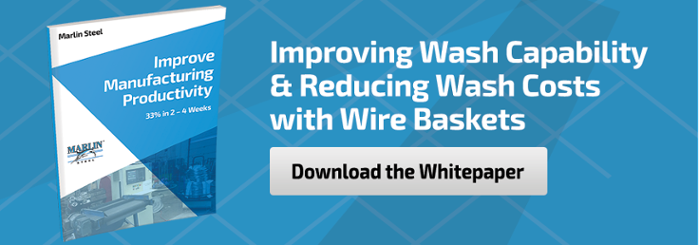 Marlin Steel’s staff is enormously proud of their long track record of safety. For several consecutive years, Marlin has operated without a time-lost safety incident.
Marlin Steel’s staff is enormously proud of their long track record of safety. For several consecutive years, Marlin has operated without a time-lost safety incident.
Achieving this feat required a concerted effort on the part of Marlin’s workers, especially among the employee-led safety committee. These hard-working individuals put into place engineering controls, work practice controls, and protective equipment practices that helped reduce Marlin’s incident rate to almost nothing.
One of the most important challenges that Marlin’s employees have had to deal with is the use of hazardous chemicals on the jobsite. Ensuring safety when working with toxic chemicals isn’t easy, but it’s a task that Marlin’s safety committee handled with aplomb.
How did Marlin ensure a safe workplace for employees, and how can you do the same?
Here are a few suggestions from the Marlin team to you:
#1: Eliminate Direct Exposure When Possible
In any process, no matter how much safety gear you give workers, there’s always a risk of exposure when workers are put into the same environment as toxic chemicals.
One easy way to ensure safety is to keep workers as far away from processes involving toxic materials as possible. Marlin’s manufacturing robots are often employed in processes that involve dangerous substances while human workers oversee the process from a safe distance.
#2: Substitute with Nontoxic Alternatives When Possible
This is one of the most strongly-recommended solutions presented by OSHA in their hazardous substances exposure control literature. By replacing toxic chemicals with nontoxic alternatives, the risk of exposure is largely eliminated.
While even nontoxic chemicals can cause harm, that harm is largely limited compared to a toxic substance. However, as desirable as this solution is, it isn’t always practical, as there may not be a cost-effective alternative to certain chemicals for certain processes.
#3: Keep Emergency First-Aid Response Equipment On-Hand and Make Sure Employees Know How to Use it
Almost every employer knows to keep basic safety gear such as gloves, goggles, respirators, cleansuits, etc. on-hand for employees to use when working with hazardous chemicals. What many worksites need is to make sure that emergency chemical first-aid response equipment is available for workers to use, and that workers know how to use such equipment.
Equipment such as eyewash and shower stations are critical for workplaces using even mild irritants, let alone strong corrosives. Employees should know how to operate these devices literally blindfolded, as their vision may be impaired when they go to use them.
Running some emergency drills for responding to a chemical exposure event can help minimize the harm that such an event causes by preparing workers for the eventuality.
In fact, running safety drills in general helps improve workplace safety by reminding workers of safety standards and procedures on the job.
Each of these tips is something that can help turn the workplace into a safe spot for maximizing productivity, even when working with toxic chemicals. Creating a safety-first mentality is a major part of Marlin’s success as a safe, productive custom metal form manufacturer.



.gif)


